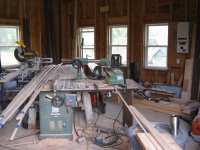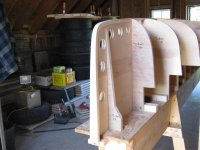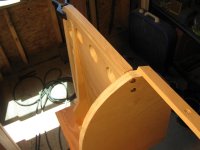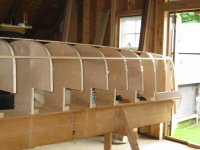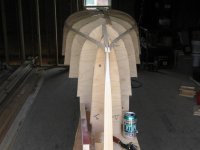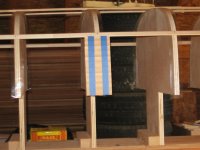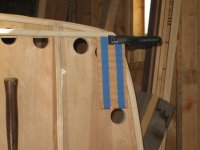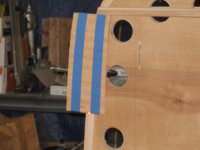Slick way to cut your forms !
I used what I refer to as the Minnesota strongback. It's a T top, specific to the length of the canoe. None of the forms are over 16" tall. And so you can get almost all your forms for a solo, out of one sheet of plywood.
The Bear mountain form style, ( Mushroom shaped) requires two or three sheets of plywood for the forms. They are so much higher than the strongback.
In this pic, One thing that is missing is a Strip fastened to the Top of those forms, to ensure a12" spacing between faces. Oh and of course tape on the forms. I really like Clear Packing tape. It releases so good ! I just corrected the photo.
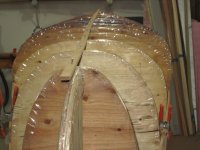

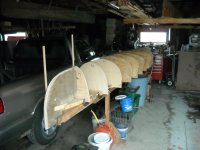
I used what I refer to as the Minnesota strongback. It's a T top, specific to the length of the canoe. None of the forms are over 16" tall. And so you can get almost all your forms for a solo, out of one sheet of plywood.
The Bear mountain form style, ( Mushroom shaped) requires two or three sheets of plywood for the forms. They are so much higher than the strongback.
In this pic, One thing that is missing is a Strip fastened to the Top of those forms, to ensure a12" spacing between faces. Oh and of course tape on the forms. I really like Clear Packing tape. It releases so good ! I just corrected the photo.



Last edited:

